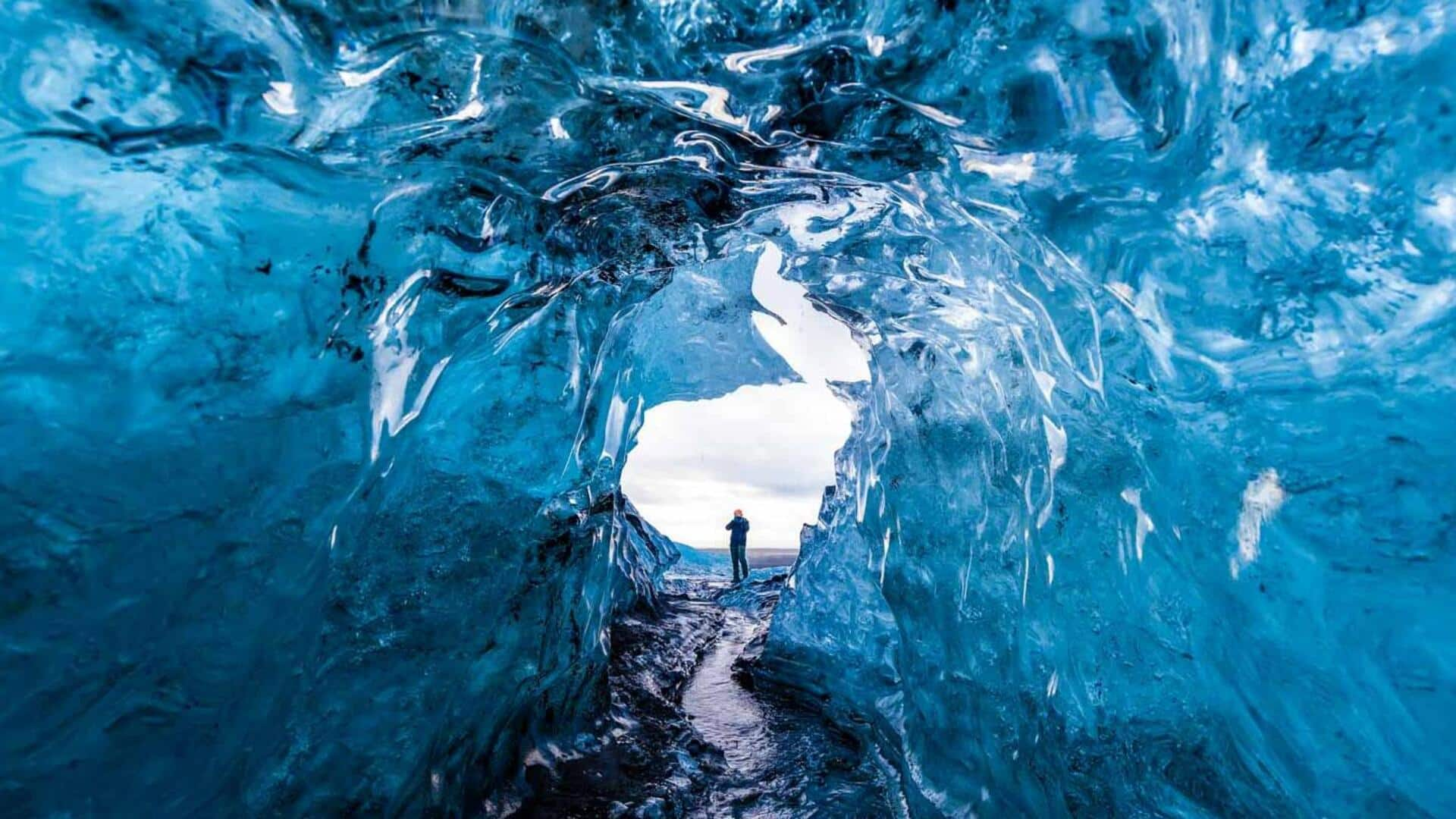
Iceland's ice caves: An adventure you can't miss
What's the story
Iceland's ice caves are a surreal experience, drawing adventurers from all over the world. These natural wonders, formed by glaciers, provide an opportunity to witness nature's artistry up close. The caves are known for their stunning blue ice formations and intricate patterns, making them a photographer's dream. Exploring these caves is not just an adventure but also a chance to learn about Iceland's unique geology and climate.
#1
Understanding glacier formations
Glaciers are formed from compacted snow over centuries. In Iceland, the glaciers feed into ice caves, which are carved out by melting and refreezing water. The interplay of temperature and pressure causes the ice to take on various forms, creating stunning visuals. Each cave is unique, changing with the seasons and weather conditions.
#2
Best time to visit ice caves
The best time to visit Iceland's ice caves is during winter, when the caves are most stable. From November to March, the temperatures are low enough to keep the caves intact. During this period, visitors can safely explore these natural wonders with guided tours ensuring safety and accessibility.
Tip 1
Safety tips for exploring ice caves
Safety should be your top priority while exploring ice caves. Always go with a guide who knows the terrain and conditions. Wear appropriate clothing and footwear to deal with cold temperatures and slippery surfaces. Keep an eye on weather forecasts as conditions can change rapidly in glacial areas.
Tip 2
Photography tips for capturing ice caves
To capture the beauty of ice caves, use a camera with manual settings to adjust for low light conditions inside the caves. A tripod can help stabilize your shots on uneven ground or in dim lighting situations. Experiment with different angles to highlight textures and patterns in the ice formations.